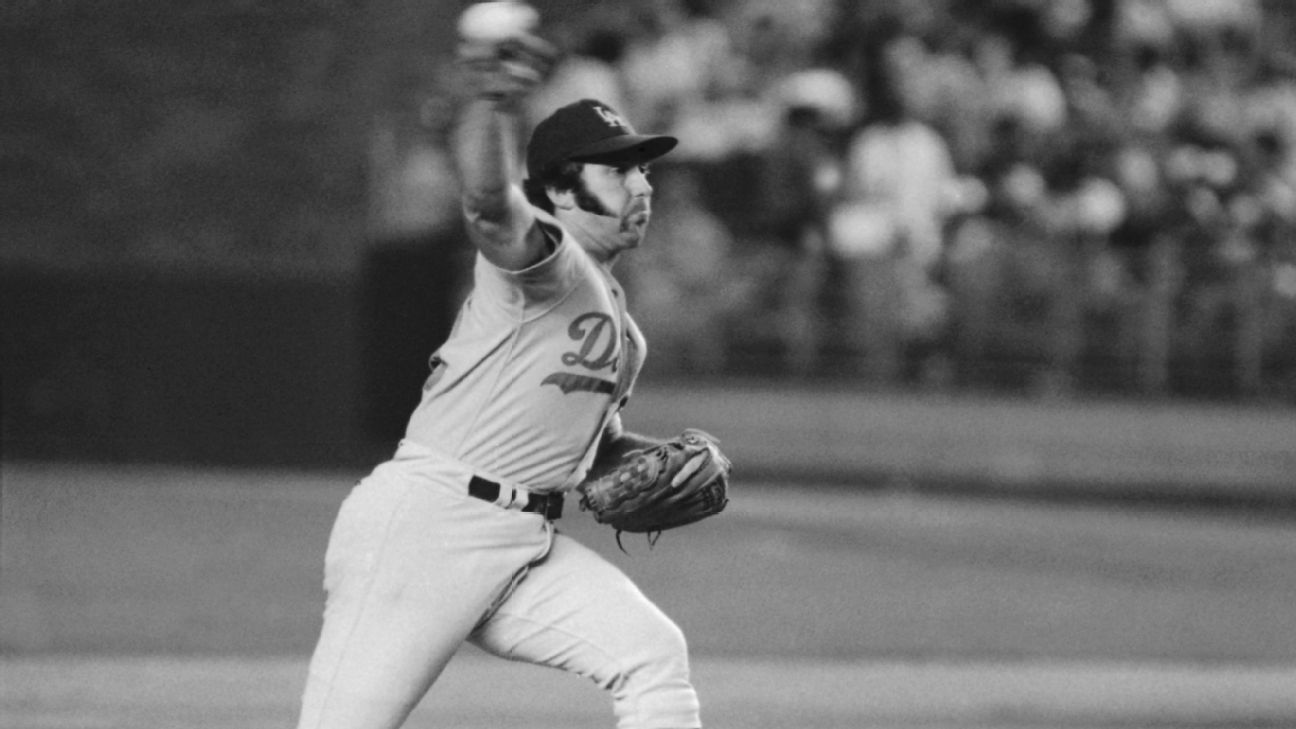
On the corner of two unpaved roads in a little Florida town sits a ramshackle green-and-white house that for years looked like the site of a cult gathering, and in a way it was. During the day, grown men with outlandish dreams would do things that to the passersby who dared peer into the backyard looked absurd. They were throwing giant iron balls and flinging trash can lids and strapping heavy sandbags to their wrists. And then, when they were done with that, they picked up baseballs and threw them in a fashion no one ever had seen, because that's what Dr. Mike Marshall taught them to do.
Known to the world as the winner of the 1974 National League Cy Young Award for the Los Angeles Dodgers, Marshall went by a different name to the students at his pitching academy: Doc. To them, he was a savant, a theorist whose understanding of pitching was so far ahead of his time that nobody in organized baseball was going to give him an opportunity because they couldn't fathom what he was talking about. And two decades later, it's clear they were right.
Marshall died Monday in Zephyrhills, Florida. He was 78. He lived long enough to see some of his most foundational ideas -- weighted-ball training, emphasis on spin, the importance of slow motion video -- co-opted by major league organizations and spread to the masses. Marshall long wished for credit but never was willing to play the game -- to market himself or to acknowledge some of his flaws or to abandon the pitching motion that he convinced himself would rid the game of arm injuries.
It's instructive to start there, in fact, because squaring the notion that someone who knew so much about pitching could tell players to throw a ball like that is incongruous. Ten years ago -- more than a decade after he started Dr. Mike Marshall's Pitching Coach Services -- Marshall started a YouTube channel and uploaded six videos. The first, "Marshall Pitching Motion," features a shirtless man named Jeff Sparks throwing the full suite of Doc's pitches.
Sparks, a former Tampa Bay Rays pitcher, takes a slight step back with his left foot, raises both arms and brings them down. His right arm swings backward like a pendulum as he takes a small step forward with his left foot. Sparks pushes up with his right foot as his arm extends over his head, and he throws a screwball, the pitch Marshall used en route to his Cy Young. His right leg flies forward, and he lands perpendicular to the mound. It looks funny and wrong and amazing, and for the next 10 minutes, Sparks illustrates Marshall's particular vernacular -- like the Maxline Pronation Curve -- with Doc's monotonous narration.
Someone seeing this for the first time would understandably laugh before questioning Marshall's credentials entirely. This is what the baseball establishment did. Consequently, it missed everything Doc was getting right.
The Sparks showcase includes slow motion, high-resolution video taken long before it was ubiquitous and readily available to every smartphone user. Though nobody is throwing 6-, 10- and 15-pound iron balls like Marshall's charges did, players across baseball today use slightly overweight and underweight balls to strengthen their arms. In another video, taken in the mid-2000s, a Marshall student is throwing weighted trash can lids to understand how "to get the right spin axis" on a pitch. Spin rate has been a widely accepted concept in baseball for about five years. Spin axis -- the direction a ball is spinning, which helps determine how it moves -- is something embraced by most pitchers only recently.
Even today, Marshall's theories are finding new life. On his website in 2003, he posited a theory he called "The Marshall Effect." (Doc was never shy about naming things after himself.) The premise was that the way a baseball is made, the Magnus effect -- the phenomenon that predicts that a ball moving through space should do so rationally -- was incomplete. There was something else making balls move, and Marshall believed that it had to do with the seam orientation of pitches. Eighteen years later, the concept Marshall introduced -- now being referred to as seam-shifted wake -- has invigorated a baseball physics community that believes it is perhaps the most important breakthrough in decades for understanding how pitches move.
For all of Doc's brilliance -- he earned his doctorate in exercise physiology from Michigan State in 1978 after spending his offseasons in school -- his eccentricities were also a great impediment. He was famously brusque. When I asked him in 2007 about why he no longer corresponded with people inside of baseball, he responded: "I got tired of appeasing the stupid." His website, which is a repository for the hundreds of thousands of words he wrote on pitching (and various other subjects), looks straight out of GeoCities. Nearly every entry ends with what amounted to Doc's version of a sales pitch: "To prevent pitching injuries, pitchers of all ages need to master the Marshall Pitching Motion." At the bottom of the page is his EarthLink email address. He never cared about social media. For someone who wanted the world to acknowledge his genius, he didn't work very hard at inviting it into his universe.
It was there that Doc thrived. Gilded it was not, but then he was a 5-foot-8 right-hander who didn't throw particularly hard yet in his Cy Young season threw 208 innings over 106 relief appearances. He was the lunch pail pitcher, always ready for work, conditioned to throw whenever called upon. The sort of guy who would play pied piper in a house with a tin roof.
The genius of Mike Marshall lives on in that backyard, now free of nets and balls and the detritus of his $10-a-day academy. It lives on in the words that pepper his website, in the videos that remind you the most brilliant people still get plenty wrong, in the iconoclast bingo card he filled. Most of all, it lives on in the game, this broad and beautiful universe in which he carved out his own little fiefdom that nobody wanted to visit but everyone knows about, even if they don't realize it.















 Phone: (800) 737. 6040
Phone: (800) 737. 6040 Fax: (800) 825 5558
Fax: (800) 825 5558 Website:
Website:  Email:
Email: 






